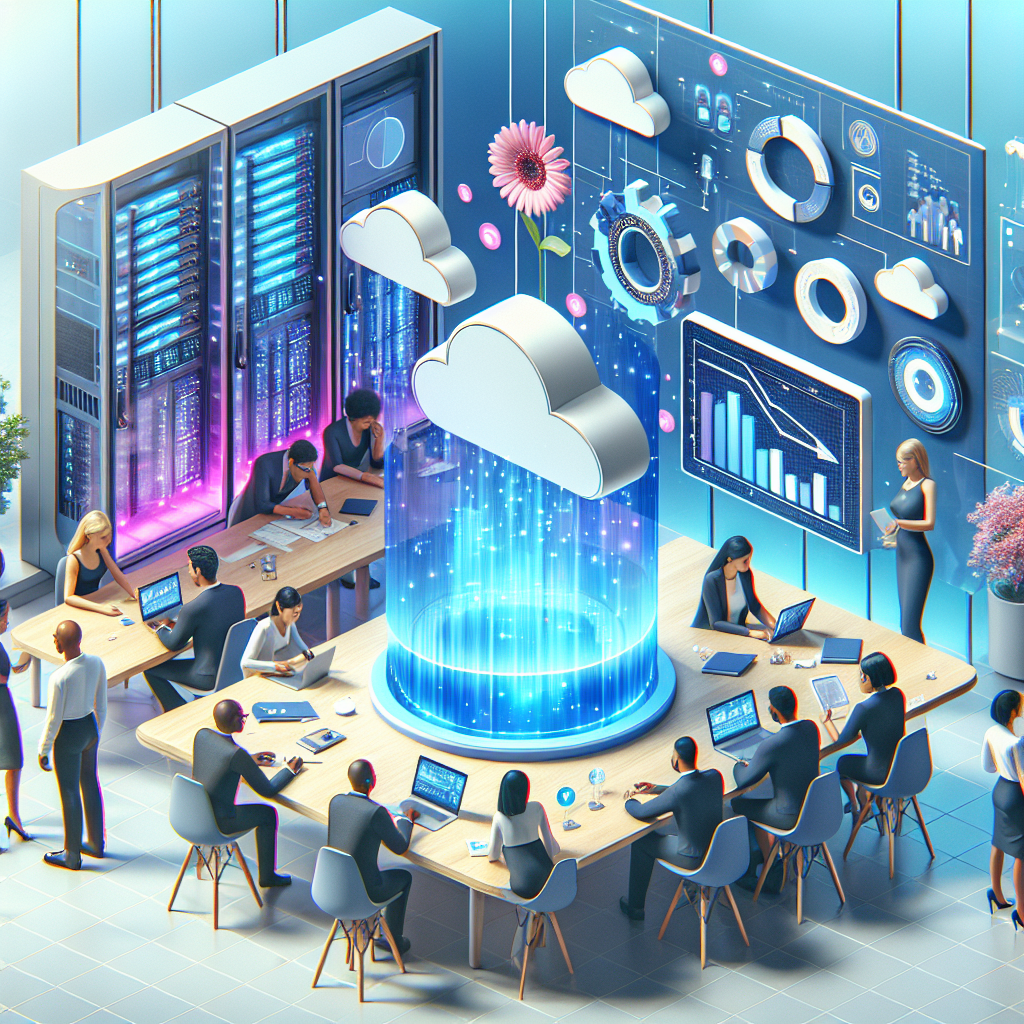Your cart is currently empty!
Tag: Agreements

The Role of Service Level Agreements in Improving Customer Satisfaction
Service Level Agreements (SLAs) are essential tools for ensuring that businesses meet their customers’ needs and expectations. A Service Level Agreement is a contract between a service provider and a customer that defines the level of service that will be provided and the metrics by which that service will be measured. By clearly outlining the expectations and responsibilities of both parties, SLAs help to establish a framework for delivering high-quality service and improving customer satisfaction.One of the key roles of SLAs in improving customer satisfaction is setting clear expectations. By clearly defining the services that will be provided, the level of performance that can be expected, and the metrics that will be used to measure that performance, SLAs help to eliminate any confusion or misunderstandings between the service provider and the customer. This transparency helps to build trust and confidence in the relationship, as customers know exactly what to expect and can hold the service provider accountable for meeting those expectations.
SLAs also play a crucial role in improving communication and collaboration between the service provider and the customer. By establishing regular communication channels, such as regular performance reviews or quarterly business reviews, SLAs help to ensure that both parties are on the same page and can address any issues or concerns in a timely manner. This proactive approach to communication helps to prevent misunderstandings and allows for quick resolution of any problems that may arise, ultimately leading to higher levels of customer satisfaction.
Furthermore, SLAs help to drive continuous improvement and innovation in service delivery. By setting specific performance metrics and targets, SLAs provide a clear roadmap for both the service provider and the customer to work towards. This focus on continuous improvement encourages the service provider to constantly evaluate and enhance their processes and systems, leading to higher levels of efficiency and effectiveness in delivering services. In turn, this results in higher levels of customer satisfaction as customers benefit from improved service quality and reliability.
In conclusion, Service Level Agreements play a critical role in improving customer satisfaction by setting clear expectations, enhancing communication and collaboration, and driving continuous improvement in service delivery. By establishing a framework for delivering high-quality service and holding both parties accountable for meeting their obligations, SLAs help to build trust and confidence in the relationship between the service provider and the customer. Ultimately, businesses that leverage SLAs effectively are better positioned to meet their customers’ needs and expectations, leading to increased customer satisfaction and loyalty.

Ensuring Compliance with Service Level Agreements: Best Practices
Service Level Agreements (SLAs) are crucial in ensuring that both parties – the service provider and the client – are on the same page when it comes to expectations and deliverables. SLAs outline the terms and conditions of the service that will be provided, including the level of service, response times, and support that will be offered. However, simply having an SLA in place is not enough; it is essential to ensure compliance with the SLA to maintain a positive relationship with the client and uphold the reputation of the service provider. Here are some best practices to ensure compliance with SLAs:1. Clear communication: The first step to ensuring compliance with an SLA is to have clear and open communication with the client. Make sure that both parties understand the terms and conditions of the SLA, including the scope of services, response times, and any penalties for non-compliance. Regular communication with the client can help to address any issues or concerns before they escalate.
2. Define measurable metrics: In order to track compliance with the SLA, it is important to define measurable metrics that can be monitored and measured. This could include metrics such as response times, uptime, and resolution times. By setting clear and achievable metrics, both parties can easily track performance and identify any areas that need improvement.
3. Monitor performance: Regularly monitoring performance against the SLA metrics is essential to ensure compliance. This can be done through regular reporting and analysis of key performance indicators. By monitoring performance, any deviations from the SLA can be identified and addressed promptly.
4. Implement a feedback mechanism: It is important to have a feedback mechanism in place to gather input from the client on the service provided. This could include regular surveys or feedback forms that allow the client to provide input on their satisfaction with the service. By gathering feedback, the service provider can identify any areas for improvement and make necessary adjustments to ensure compliance with the SLA.
5. Continuous improvement: Compliance with an SLA is an ongoing process that requires continuous improvement. By regularly reviewing performance against the SLA metrics and implementing changes as needed, the service provider can ensure that they are meeting the expectations of the client. This could include investing in new technologies, training staff, or revising processes to improve service delivery.
In conclusion, ensuring compliance with SLAs is essential for maintaining a positive relationship with clients and upholding the reputation of the service provider. By following best practices such as clear communication, defining measurable metrics, monitoring performance, implementing a feedback mechanism, and continuous improvement, service providers can ensure that they are meeting the expectations outlined in the SLA. By doing so, both parties can benefit from a successful and mutually beneficial partnership.

Tips for Reviewing and Updating Service Level Agreements (SLAs) Regularly
Service Level Agreements (SLAs) are a crucial component of any business that provides services to customers. They outline the expectations and responsibilities of both parties, ensuring that services are delivered efficiently and effectively. However, as business environments and customer needs evolve, it is important to regularly review and update SLAs to ensure they remain relevant and effective. Below are some tips for reviewing and updating SLAs regularly:1. Schedule Regular Reviews: Set a schedule for reviewing SLAs at least once a year, or more frequently if needed. This will ensure that SLAs are updated in a timely manner to reflect any changes in the business or industry.
2. Involve Stakeholders: When reviewing SLAs, it is important to involve all stakeholders, including customers, service providers, and internal teams. This will help ensure that all parties are aligned on expectations and requirements.
3. Assess Performance Metrics: Review performance metrics outlined in the SLA to ensure they are still relevant and measurable. Consider adding new metrics or adjusting existing ones to better reflect the goals of the business.
4. Identify Areas for Improvement: Use the review process to identify any areas for improvement in the SLA. This could include clarifying language, updating service levels, or adding new services that have been introduced since the last review.
5. Update Contact Information: Ensure that all contact information in the SLA is up to date, including key personnel and escalation points. This will help facilitate communication and issue resolution in a timely manner.
6. Review Legal and Compliance Requirements: Review the SLA to ensure it complies with any legal or regulatory requirements that may have changed since the last review. This will help protect both parties from potential legal issues.
7. Communicate Changes: Once the review and updates are complete, communicate any changes to all parties involved. This will help ensure that everyone is aware of the updated SLA and can adjust their processes accordingly.
In conclusion, regularly reviewing and updating SLAs is essential to ensuring that services are delivered effectively and efficiently. By following these tips, businesses can ensure that their SLAs remain relevant and beneficial to all parties involved.

Negotiating Service Level Agreements (SLAs) with Vendors and Partners
Negotiating Service Level Agreements (SLAs) with vendors and partners is a critical aspect of any business relationship. An SLA is a formal contract that outlines the expectations, responsibilities, and deliverables of both parties involved in a business partnership. It sets clear guidelines for the level of service that is expected, as well as the consequences if those expectations are not met.When negotiating an SLA with a vendor or partner, there are several key factors to consider. The first step is to clearly define the scope of the agreement. This includes outlining the specific services that will be provided, the expected outcomes, and the timeline for delivery. It is important to be as specific as possible in defining these terms to avoid any misunderstandings or disputes later on.
Another important consideration when negotiating an SLA is to establish measurable performance metrics. This could include metrics such as response time, resolution time, uptime, and customer satisfaction. These metrics should be realistic and achievable, and should be regularly monitored and reviewed to ensure that both parties are meeting their obligations.
In addition to performance metrics, it is also important to include provisions for escalation and dispute resolution in the SLA. This ensures that any issues or disagreements that arise during the course of the partnership can be resolved in a timely and fair manner. It is also important to include provisions for regular review and amendment of the SLA to ensure that it remains relevant and effective over time.
When negotiating an SLA, it is important to be clear and transparent about expectations and requirements. Both parties should have a clear understanding of their roles and responsibilities, as well as the consequences of failing to meet those obligations. It is also important to establish a strong line of communication between both parties to ensure that any issues or concerns are addressed promptly and effectively.
In conclusion, negotiating Service Level Agreements with vendors and partners is a crucial step in establishing a successful business relationship. By clearly defining the scope of the agreement, establishing measurable performance metrics, and including provisions for escalation and dispute resolution, businesses can ensure that both parties are meeting their obligations and delivering the level of service expected. By following these guidelines, businesses can establish strong and productive partnerships that benefit both parties involved.

Understanding the Importance of Service Level Agreements (SLAs) in Business Relationships
Service Level Agreements (SLAs) are crucial documents that outline the expectations and responsibilities of both parties in a business relationship. These agreements are essential for setting clear guidelines for the delivery of services and ensuring that both parties are on the same page.SLAs are particularly important in today’s fast-paced business environment, where companies rely on a wide range of services to operate efficiently. Whether it’s IT services, marketing services, or customer support, having a well-defined SLA in place can help avoid misunderstandings and disputes that can arise when expectations are not clearly communicated.
One of the key benefits of SLAs is that they provide a framework for measuring the performance of service providers. By establishing specific metrics and targets, businesses can track the quality and efficiency of the services they receive. This not only helps in holding service providers accountable but also enables businesses to identify areas for improvement and make informed decisions about their service providers.
SLAs also play a crucial role in managing risk in business relationships. By clearly outlining the responsibilities and liabilities of both parties, SLAs can help mitigate potential disputes and protect both parties in the event of a breach of contract. This can be particularly important when dealing with critical services that can have a significant impact on a business’s operations.
Furthermore, SLAs can help businesses build trust and strengthen relationships with their service providers. By clearly defining expectations and establishing a framework for communication and collaboration, SLAs can help foster a more transparent and productive working relationship. This, in turn, can lead to improved service delivery and greater satisfaction for both parties.
In conclusion, Service Level Agreements are essential tools for managing business relationships and ensuring the smooth delivery of services. By clearly defining expectations, measuring performance, and managing risk, SLAs can help businesses build stronger, more productive relationships with their service providers. Investing the time and effort to create well-crafted SLAs can pay off in the long run, leading to more efficient operations, better outcomes, and ultimately, greater success for your business.

The Future of Service Level Agreements: Trends to Watch in the Industry
Service Level Agreements (SLAs) have long been a crucial aspect of the relationship between service providers and their customers. These agreements outline the level of service that the provider is expected to deliver, including metrics such as uptime, response times, and resolution times. However, as technology and customer expectations continue to evolve, the future of SLAs is also changing. Here are some key trends to watch in the industry:1. Outcome-based SLAs: Traditionally, SLAs have been focused on inputs, such as the availability of a service or the speed of response to a customer issue. However, there is a growing trend towards outcome-based SLAs, where the focus is on the actual results achieved by the service provider. This shift reflects a move towards a more customer-centric approach, where the emphasis is on delivering tangible business value rather than just meeting technical benchmarks.
2. Real-time monitoring and reporting: With the increasing complexity and interdependence of IT systems, there is a growing need for real-time monitoring and reporting to ensure that SLAs are being met. Service providers are investing in advanced monitoring tools that can provide real-time visibility into the performance of their services, allowing them to proactively identify and address issues before they impact the customer.
3. AI-driven SLAs: Artificial intelligence (AI) is revolutionizing the way SLAs are managed. AI-powered algorithms can analyze vast amounts of data to predict and prevent service disruptions, optimize resources, and improve the overall performance of IT services. By leveraging AI, service providers can enhance the accuracy and effectiveness of their SLAs, leading to better outcomes for customers.
4. Customized SLAs: One size does not fit all when it comes to SLAs. Customers have unique requirements and priorities, and service providers are increasingly offering customized SLAs to meet these specific needs. By tailoring SLAs to individual customers, service providers can ensure that they are delivering the level of service that is most important to each customer, leading to increased satisfaction and loyalty.
5. Collaboration and partnership: As IT environments become more complex and interconnected, service providers are recognizing the importance of collaboration and partnership in meeting SLA requirements. By working closely with customers, vendors, and other stakeholders, service providers can ensure that SLAs are realistic, achievable, and aligned with the broader business goals of all parties involved.
In conclusion, the future of SLAs is evolving to meet the changing needs and expectations of customers in a rapidly evolving technological landscape. By embracing outcome-based SLAs, investing in real-time monitoring and AI-driven solutions, offering customized agreements, and fostering collaboration and partnership, service providers can ensure that they are delivering the level of service that their customers expect and deserve. Keeping an eye on these trends will be crucial for staying ahead in the competitive service provider industry.

Tips for Successfully Managing Service Level Agreements in a Remote Work Environment
As remote work becomes increasingly common in today’s workforce, managing service level agreements (SLAs) in a remote work environment presents a unique set of challenges. However, with the right strategies in place, it is possible to successfully manage SLAs and ensure that service levels are consistently met. Here are some tips for effectively managing SLAs in a remote work environment:1. Set clear expectations: Clearly define the scope of work, deliverables, timelines, and key performance indicators (KPIs) for each SLA. Make sure that all team members understand their roles and responsibilities, as well as the expectations for meeting SLAs.
2. Use technology to track performance: Utilize project management tools and software to monitor progress, track performance metrics, and identify any potential issues or bottlenecks. This will help you stay on top of SLAs and address any issues in a timely manner.
3. Communicate regularly: Communication is key to successfully managing SLAs in a remote work environment. Schedule regular check-ins with team members to discuss progress, address any concerns, and provide feedback. Keep lines of communication open to ensure that everyone is on the same page.
4. Provide training and support: Ensure that team members have the necessary training, resources, and support to meet SLAs. Offer ongoing training and development opportunities to help team members improve their skills and performance.
5. Establish performance incentives: Consider implementing performance incentives or rewards for meeting or exceeding SLAs. This can help motivate team members to consistently deliver high-quality work and meet service level requirements.
6. Monitor and evaluate performance: Regularly review performance metrics and SLA compliance to identify trends, areas for improvement, and opportunities for optimization. Use data-driven insights to make informed decisions and continuously improve SLA management processes.
7. Adapt to changing circumstances: Be flexible and adaptable in your approach to managing SLAs in a remote work environment. Stay informed about industry trends, technological advancements, and best practices to ensure that your SLA management strategies remain effective and relevant.
By following these tips, you can successfully manage service level agreements in a remote work environment and ensure that service levels are consistently met. Effective SLA management is essential for maintaining customer satisfaction, improving operational efficiency, and driving business success in today’s remote work landscape.

Negotiating Service Level Agreements with Vendors and Partners
Negotiating Service Level Agreements (SLAs) with vendors and partners is a crucial aspect of any business relationship. These agreements define the level of service that the vendor or partner is expected to provide, ensuring that both parties are clear on their responsibilities and the expectations for the partnership. By negotiating SLAs effectively, businesses can ensure that their needs are met and that they are receiving the best possible service from their vendors and partners.When negotiating SLAs with vendors and partners, it is important to consider several key factors. First and foremost, it is essential to clearly define the scope of the services that will be provided. This includes outlining the specific tasks that the vendor or partner will be responsible for, as well as any performance metrics that will be used to measure their success.
In addition to defining the scope of the services, it is also important to establish clear expectations for response times and resolution times. This ensures that both parties are on the same page regarding how quickly issues will be addressed and resolved, preventing any misunderstandings or conflicts down the line.
Another key consideration when negotiating SLAs is the pricing structure. It is important to clearly outline the costs associated with the services being provided, as well as any additional fees or charges that may apply. By negotiating a fair and transparent pricing structure, businesses can avoid any surprises or disputes over costs in the future.
Finally, it is important to include provisions for monitoring and reporting in the SLA. This allows both parties to track the performance of the services being provided and ensure that the agreed-upon standards are being met. By including these provisions in the SLA, businesses can hold their vendors and partners accountable for their performance and address any issues that may arise in a timely manner.
In conclusion, negotiating service level agreements with vendors and partners is a critical step in establishing successful business relationships. By clearly defining the scope of services, setting expectations for response and resolution times, establishing a fair pricing structure, and including provisions for monitoring and reporting, businesses can ensure that they are receiving the best possible service from their vendors and partners. By negotiating SLAs effectively, businesses can set the foundation for a strong and mutually beneficial partnership that will help them achieve their goals and drive success in the long term.

Measuring and Monitoring Service Level Agreements for Optimal Performance
Service Level Agreements (SLAs) are essential agreements between a service provider and their customers that outline the level of service that will be provided. Measuring and monitoring SLAs is crucial for ensuring optimal performance and customer satisfaction.One of the key reasons for measuring and monitoring SLAs is to ensure that the service provider is meeting the agreed-upon standards. By regularly measuring performance against the SLA metrics, service providers can identify any areas where they are falling short and take corrective action to improve performance.
Monitoring SLAs also helps to identify any trends or patterns in performance that may indicate underlying issues that need to be addressed. For example, if a service provider consistently fails to meet a certain SLA metric, it may be a sign that there is a systemic problem that needs to be addressed.
In addition to ensuring that service providers are meeting their obligations, monitoring SLAs also helps to identify opportunities for improvement. By analyzing SLA metrics, service providers can identify areas where they are exceeding customer expectations and use this information to further enhance their service offerings.
There are several key metrics that are commonly used to measure and monitor SLAs, including:
1. Response time: This metric measures the amount of time it takes for a service provider to respond to a customer request. A shorter response time is generally seen as a positive indicator of service quality.
2. Resolution time: This metric measures the amount of time it takes for a service provider to resolve a customer issue. A shorter resolution time indicates that the service provider is able to quickly and efficiently address customer concerns.
3. Uptime: This metric measures the amount of time that a service is available to customers. A high uptime percentage is an important indicator of service reliability.
4. Customer satisfaction: This metric measures the level of satisfaction that customers have with the service provider. Customer satisfaction surveys are a common way to measure this metric.
Monitoring SLAs can be done through a variety of methods, including automated monitoring tools, customer feedback surveys, and regular performance reviews. By taking a proactive approach to measuring and monitoring SLAs, service providers can ensure that they are meeting their customers’ expectations and continuously improving their service offerings.

The Future of Service Level Agreements: Trends and Innovations in SLA Management
Service Level Agreements (SLAs) have long been a staple in the world of business, providing a formal agreement between a service provider and a customer on the level of service that will be provided. However, as technology continues to evolve and customer expectations shift, the future of SLAs is also changing. In this article, we will explore some of the trends and innovations in SLA management that are shaping the future of service agreements.One of the key trends in SLA management is the shift towards more dynamic and flexible agreements. Traditional SLAs often involve fixed terms and metrics that may not always be relevant or reflective of the actual service being provided. In response to this, many organizations are moving towards more agile SLAs that can be adjusted in real-time based on changing customer needs and service capabilities. This allows for a more responsive and customer-centric approach to service delivery, ensuring that SLAs remain relevant and effective.
Another trend in SLA management is the increasing use of automation and artificial intelligence (AI) to streamline the monitoring and management of service agreements. AI-powered tools can analyze large amounts of data in real-time, flagging potential issues or deviations from SLA requirements before they become major problems. This proactive approach to SLA management can help to prevent service disruptions and improve overall service quality, leading to higher customer satisfaction and retention.
Additionally, there is a growing focus on outcome-based SLAs, where the emphasis is on the end result or value delivered to the customer, rather than simply meeting predefined service metrics. This shift towards outcome-based SLAs aligns more closely with the business goals of both the service provider and the customer, ensuring that SLAs are truly driving value and contributing to business success.
Innovations in SLA management are also being driven by the increasing complexity and interconnectedness of modern IT environments. As organizations adopt cloud services, IoT devices, and other emerging technologies, the traditional one-size-fits-all approach to SLAs is no longer sufficient. Instead, organizations are looking for more flexible and customizable SLA models that can accommodate the unique requirements of their specific technology stack and service ecosystem.
Overall, the future of service level agreements is evolving to meet the changing needs of businesses and customers in the digital age. By embracing dynamic, AI-driven, and outcome-based SLAs, organizations can ensure that their service agreements remain relevant, effective, and value-driven in an increasingly complex and competitive business environment.
